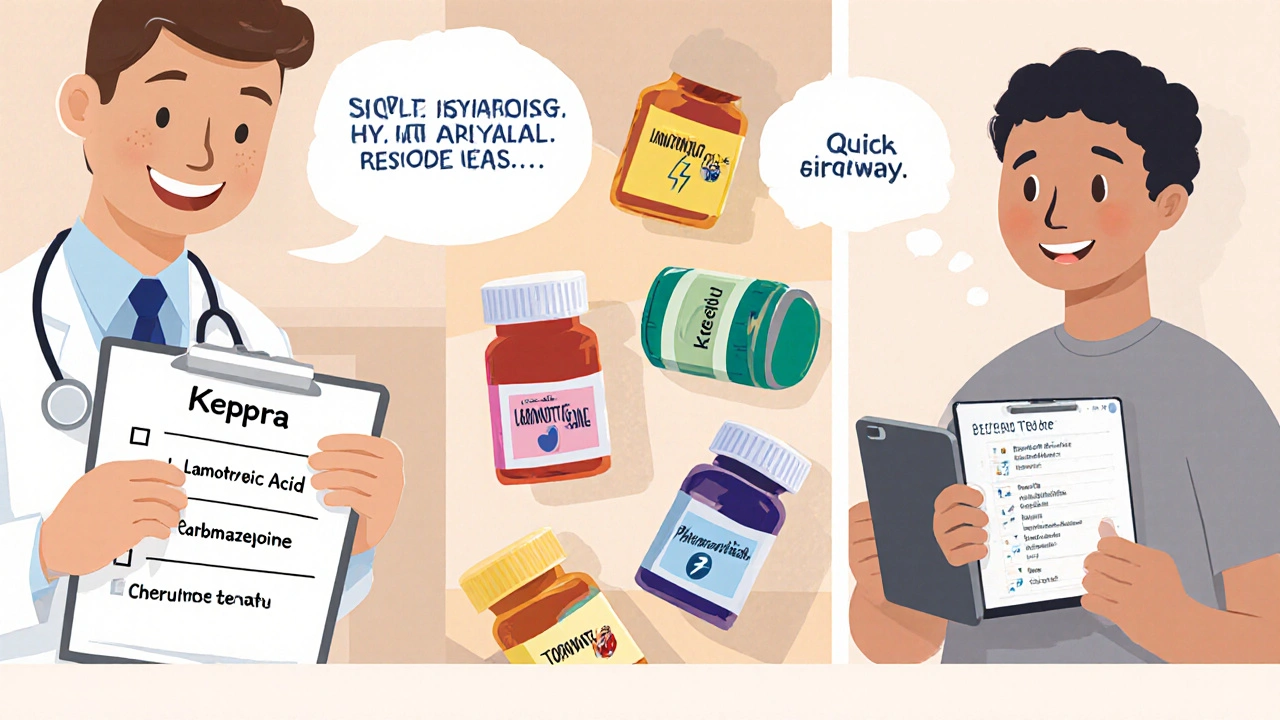Keppra – Essential Guide and Latest Insights
When working with Keppra, the brand name for levetiracetam, an anticonvulsant used to control seizures in epilepsy patients. Also known as Levetiracetam, it offers a fast-acting option for managing seizure disorders. Keppra is classified as an anticonvulsant, a drug that stabilizes neuronal activity to prevent uncontrolled firing that leads to seizures, and it is often prescribed for both focal and generalized seizure types. The condition it primarily addresses is epilepsy, a chronic neurological disorder characterized by recurrent, unprovoked seizures. Because epilepsy requires long‑term medication management, doctors weigh Keppra’s efficacy against its side‑effect profile and cost. A common point of comparison is Primidone, sold as Mysoline, which belongs to an older class of antiepileptic drugs and works by enhancing GABA activity. Understanding how Keppra fits into the broader landscape of seizure medication helps patients and caregivers make informed choices about treatment plans.
How Keppra Works and When It’s Used
Keppra’s mechanism of action involves binding to the synaptic vesicle protein SV2A, which modulates neurotransmitter release and reduces neuronal hyper‑excitability. This unique target sets it apart from many traditional drugs that focus on sodium channels or GABA receptors. Clinical guidelines recommend Keppra as a first‑line option for newly diagnosed focal seizures, and it’s also approved for generalized tonic‑clonic seizures and myoclonic seizures in juvenile myoclonic epilepsy. Dosing typically starts low—often 500 mg twice daily—and ramps up based on seizure control and tolerability. Because the drug has a relatively predictable pharmacokinetic profile, adjustments are straightforward, but patients should watch for common side effects like fatigue, dizziness, or mood changes. In rare cases, severe psychiatric symptoms or rash can appear, prompting a need for prompt medical evaluation. When side effects become problematic, clinicians might switch to an alternative like Primidone or consider supplemental therapies such as lifestyle modifications, vitamin D optimization, or adjunctive drugs that target different pathways.
Beyond the basic facts, the collection of articles below dives deeper into practical considerations. You’ll find side‑by‑side comparisons of Keppra with other antiepileptic drugs, dosage‑adjustment strategies for special populations, and real‑world tips for monitoring safety. Whether you’re looking for cost‑saving options, insights on drug interactions, or guidance on managing travel‑related dosing challenges, the posts linked here cover the whole spectrum. This curated resource aims to give you a clear picture of where Keppra stands among seizure medications and how it can be integrated into a personalized epilepsy management plan.

Keppra (Levetiracetam) vs Other Anti‑Epileptic Drugs: Comprehensive Comparison
A detailed side‑by‑side comparison of Keppra (levetiracetam) with common anti‑epileptic alternatives, covering efficacy, side effects, interactions, dosing, cost, and best‑use scenarios.
View More




